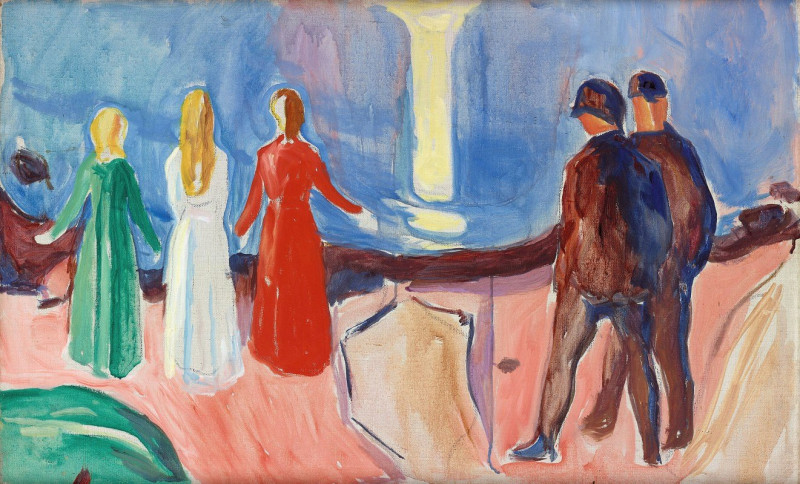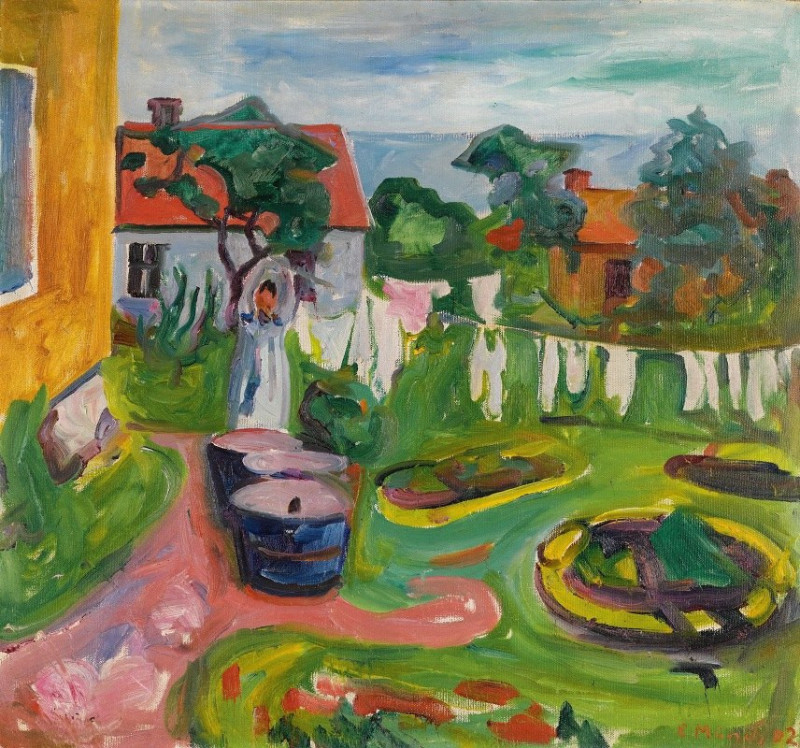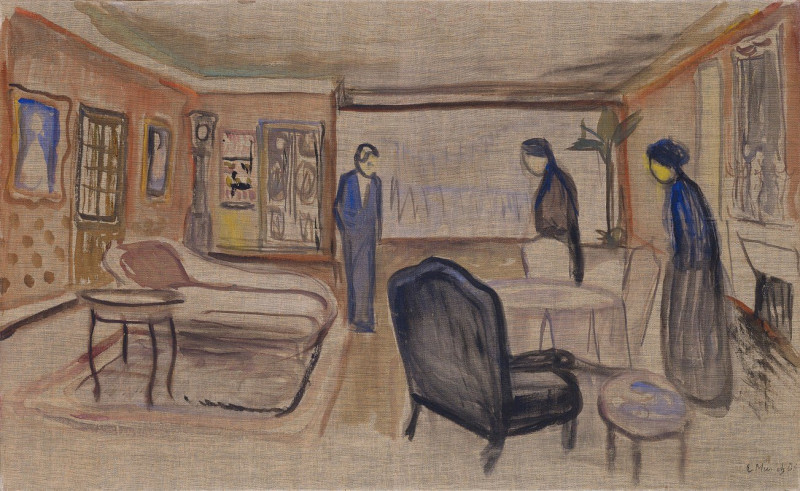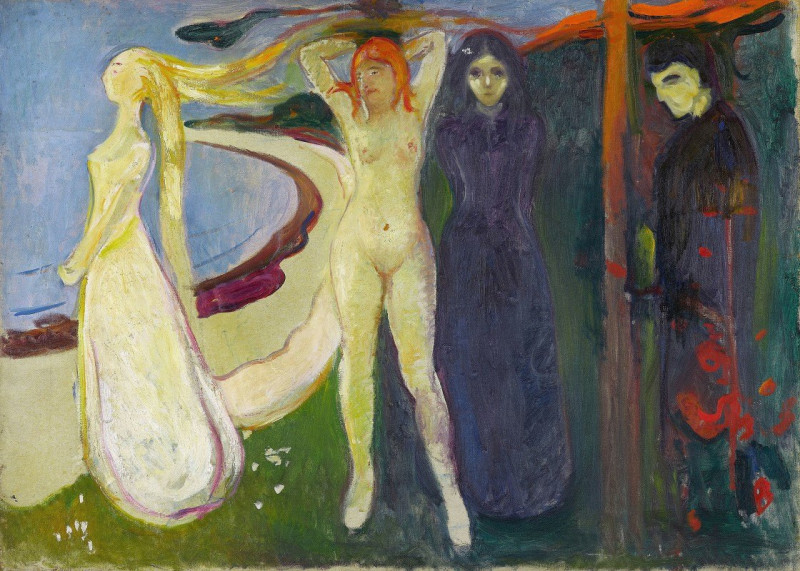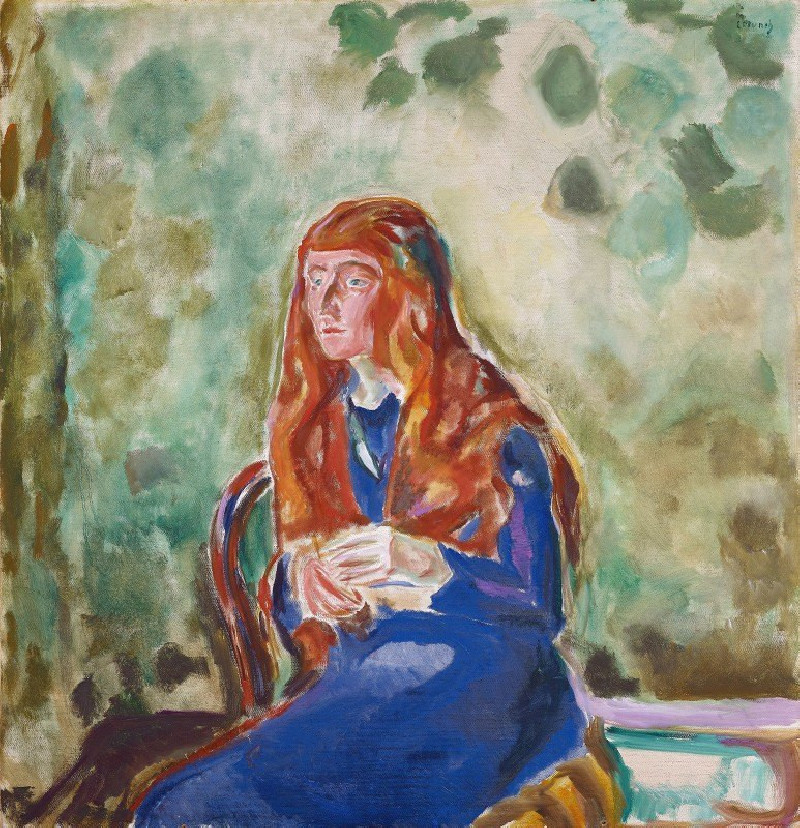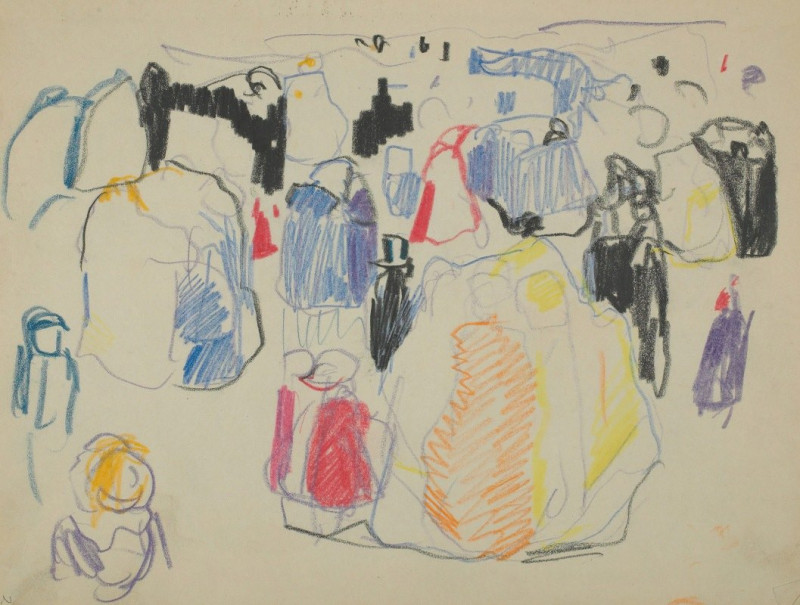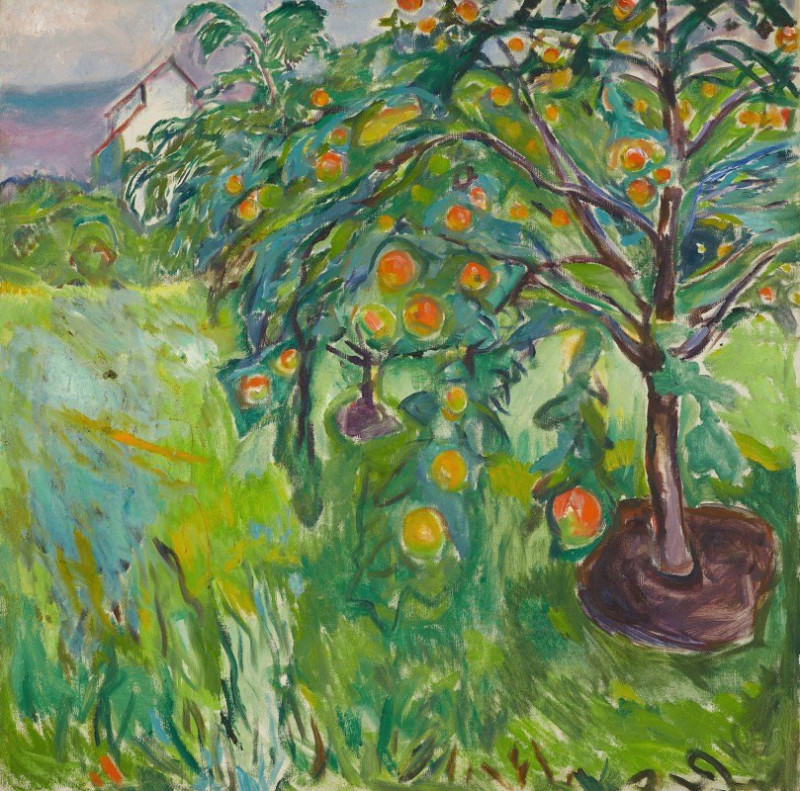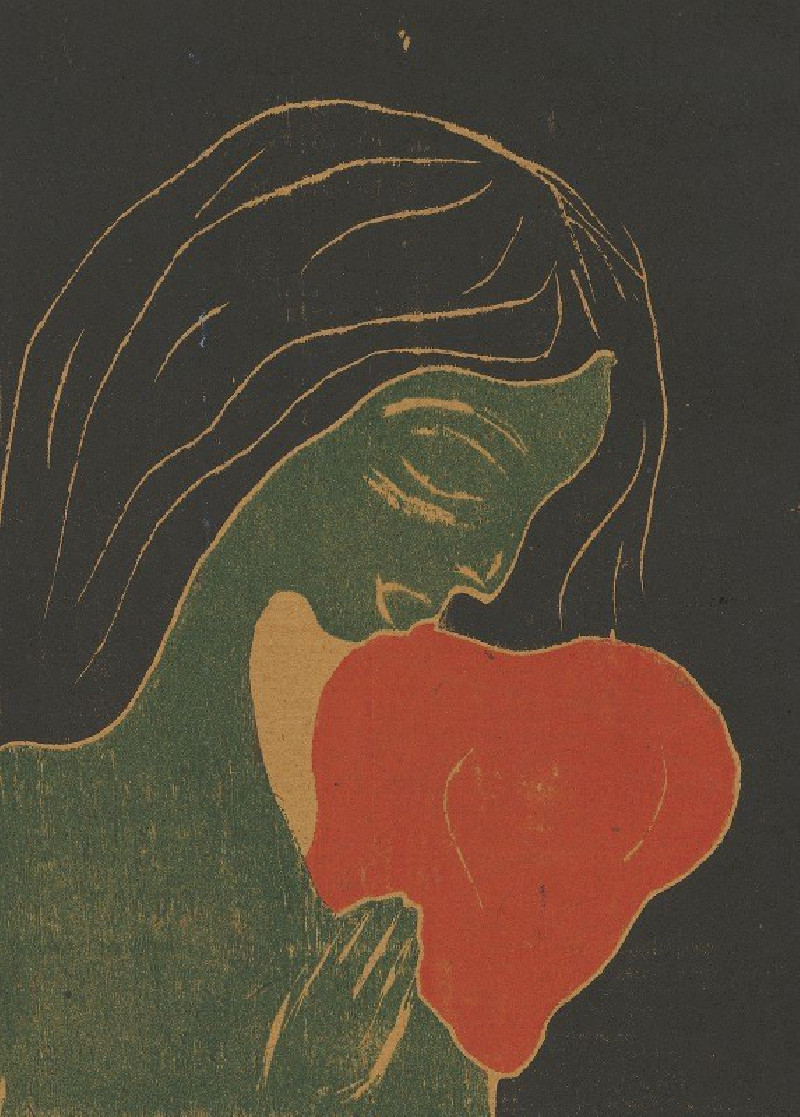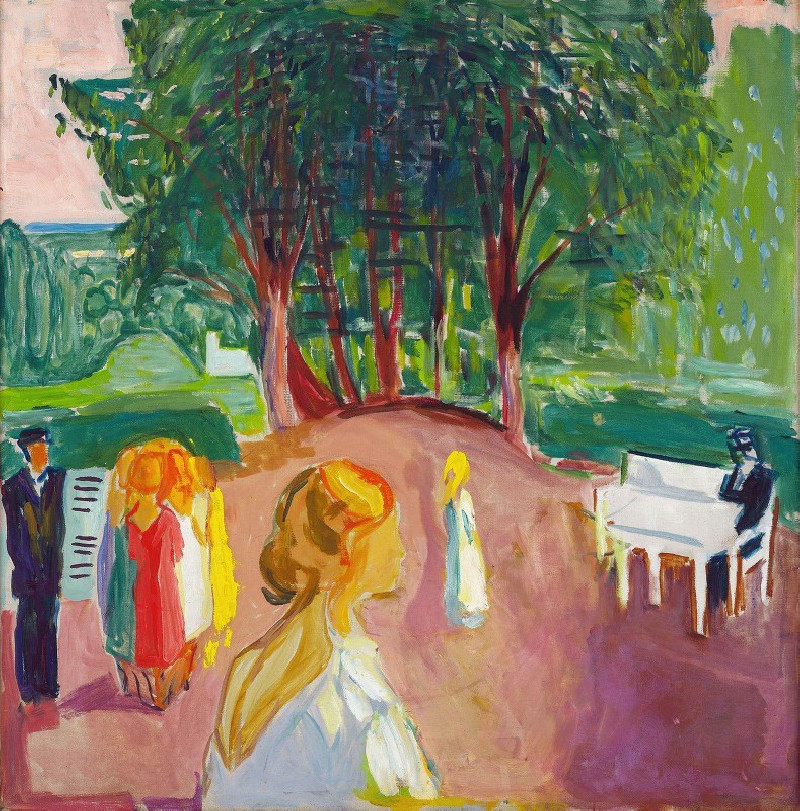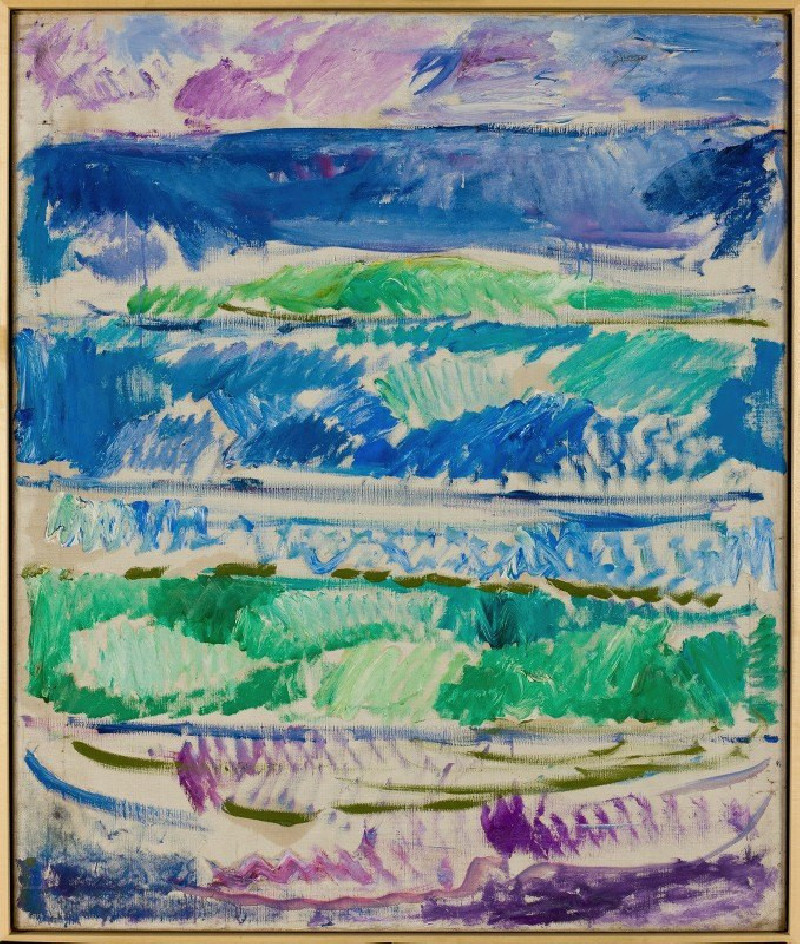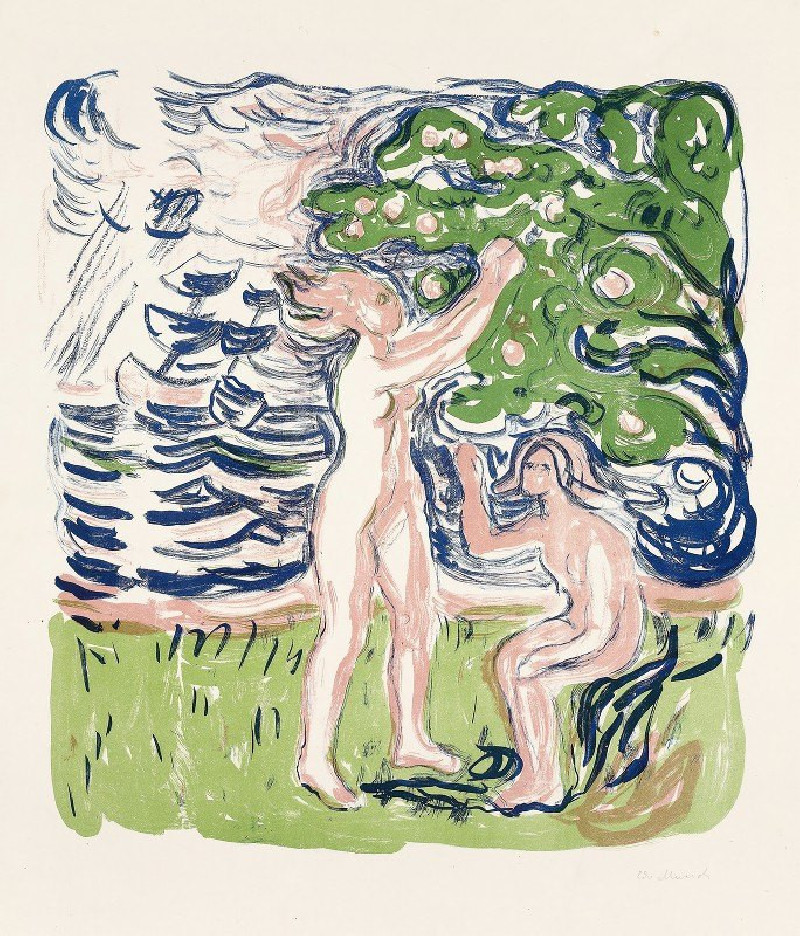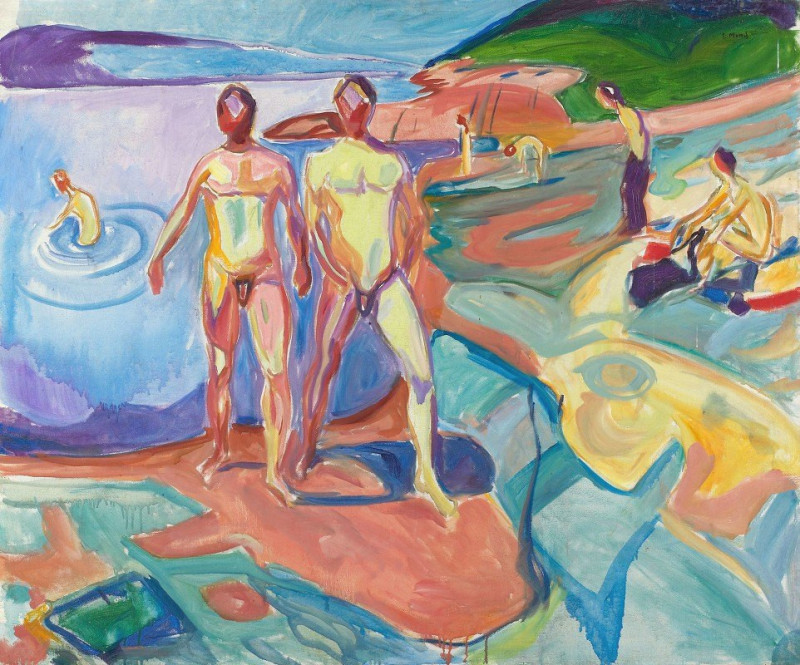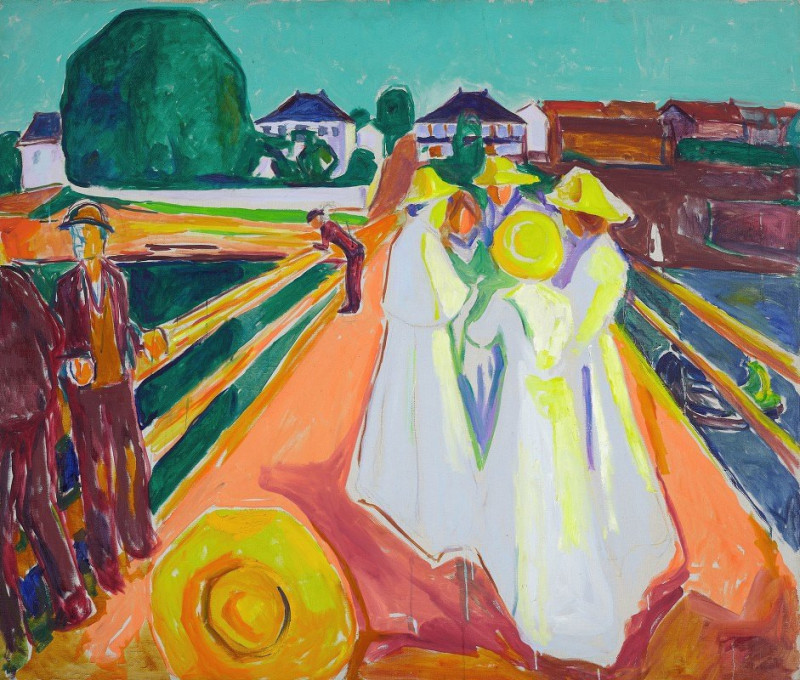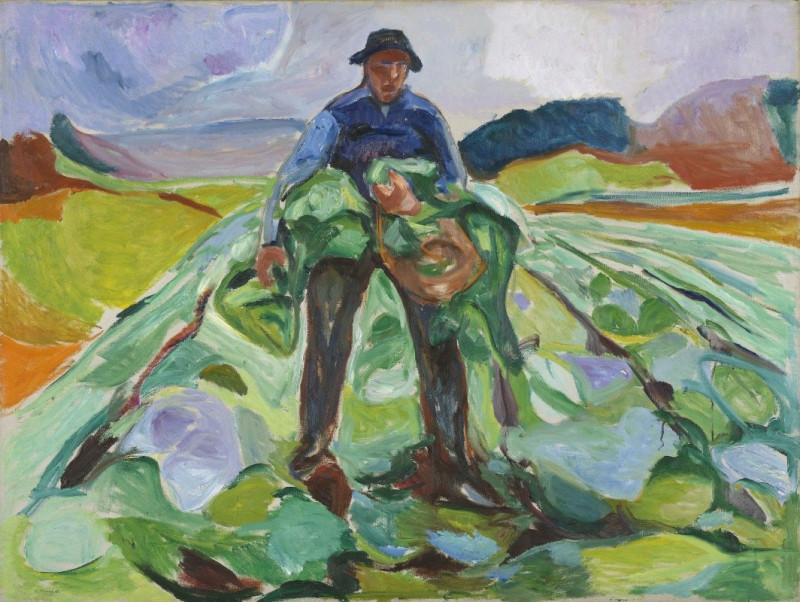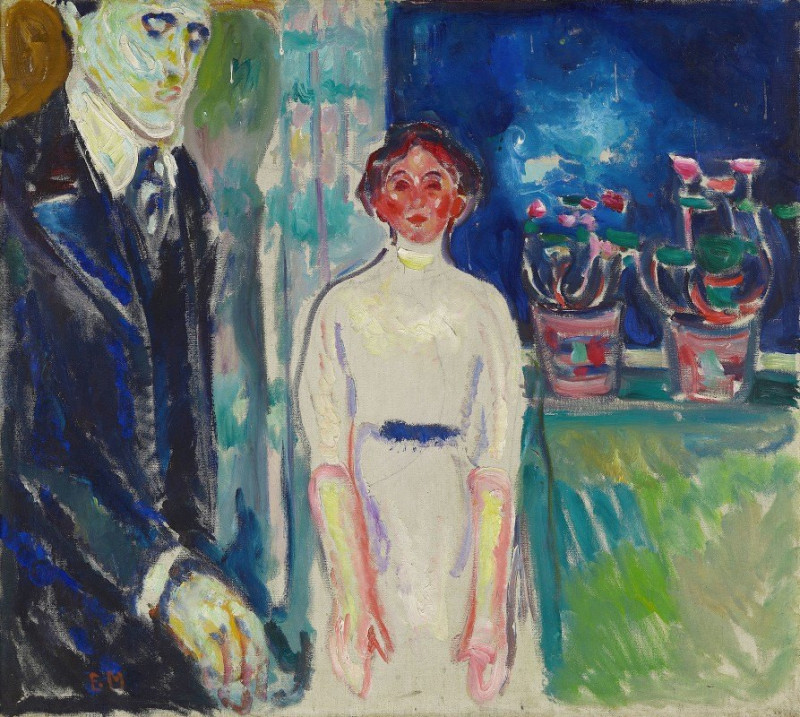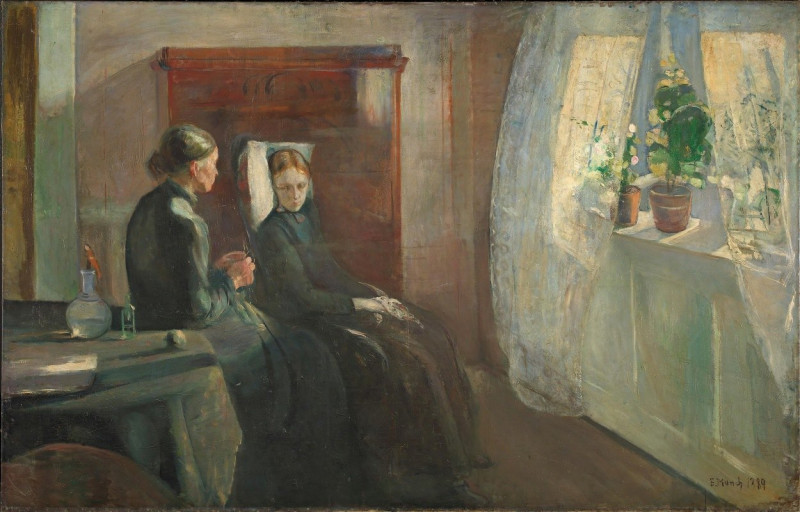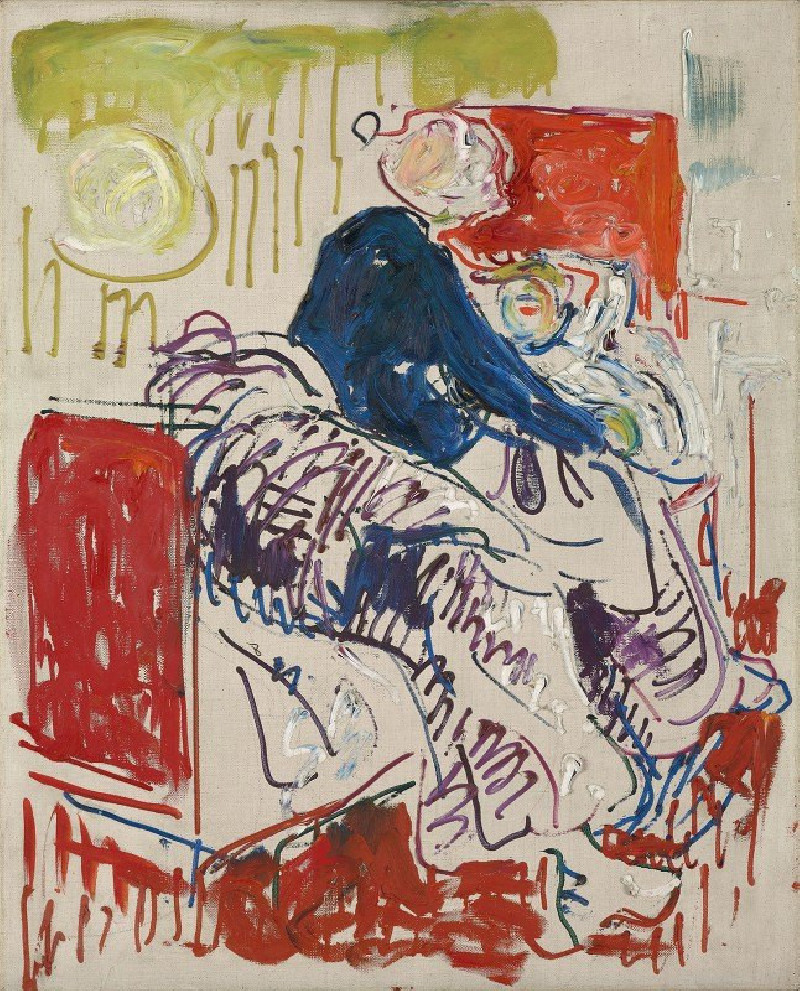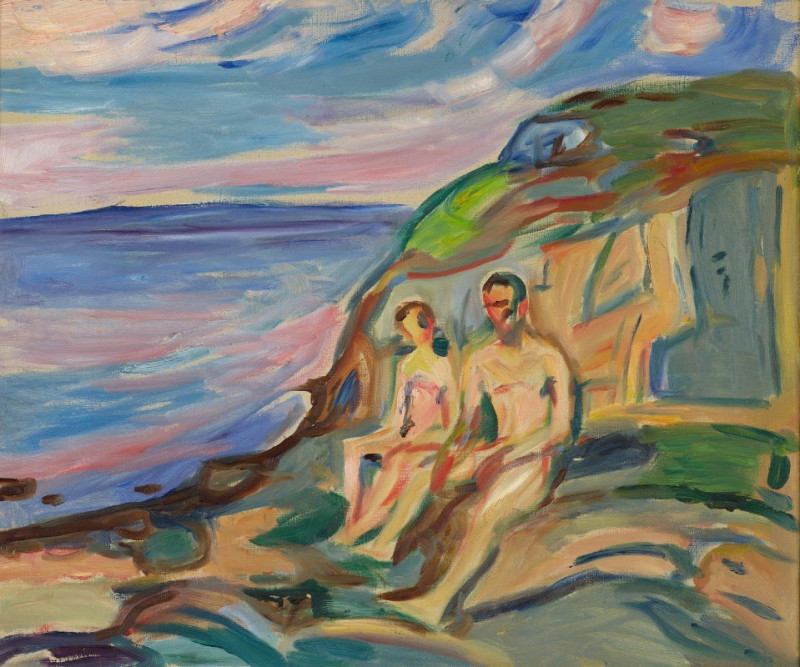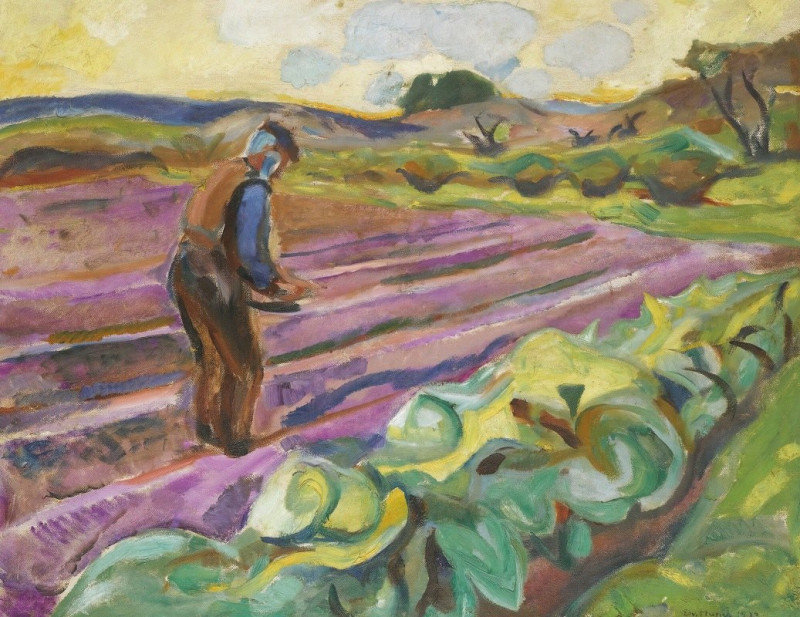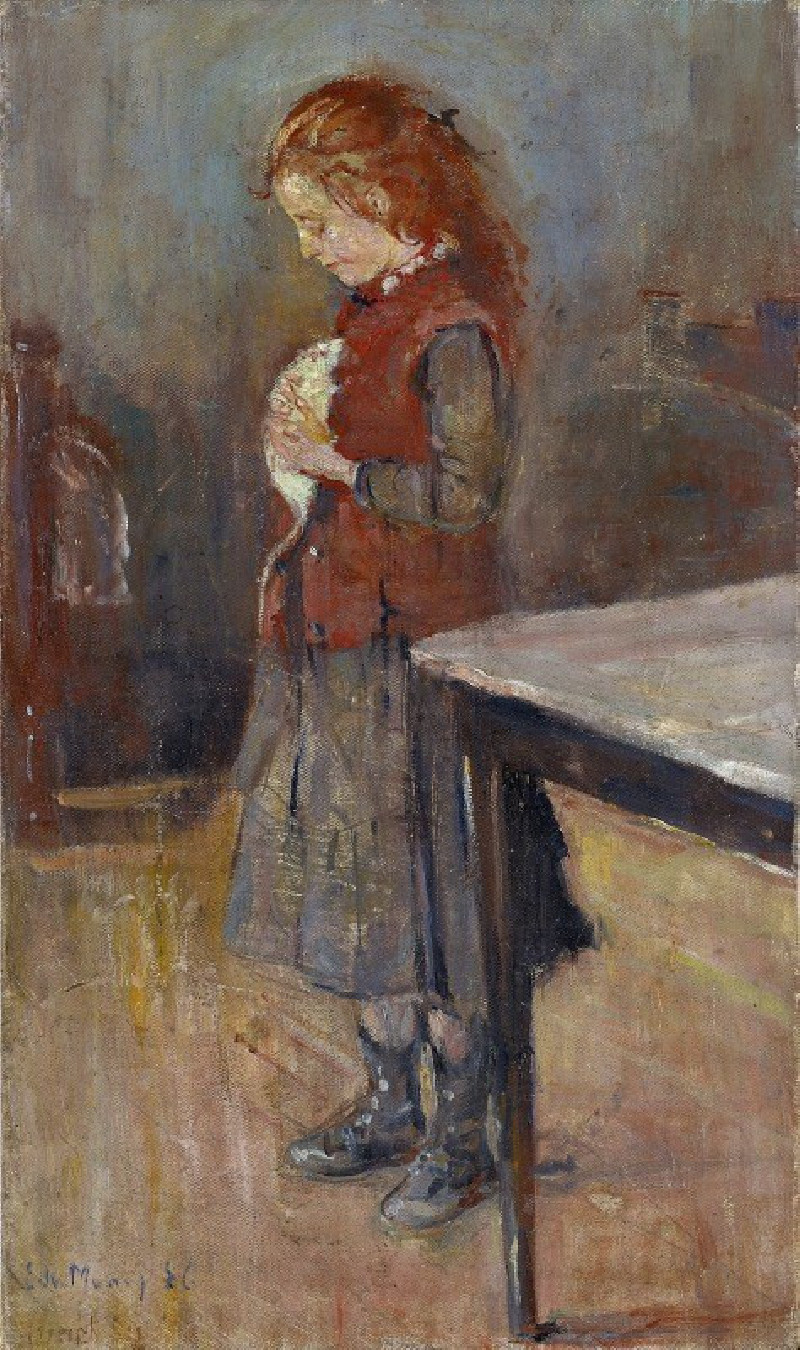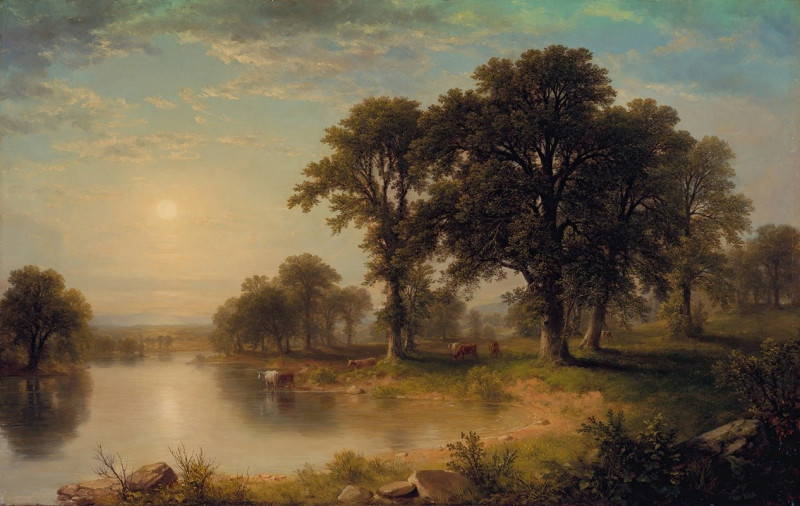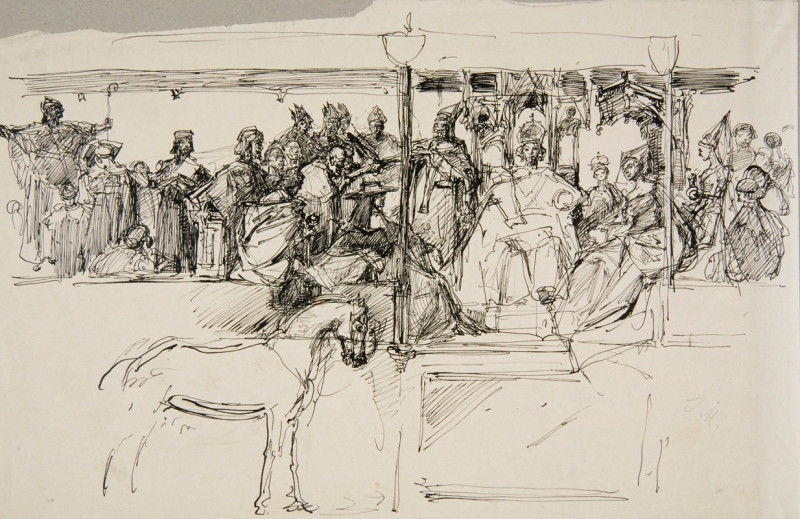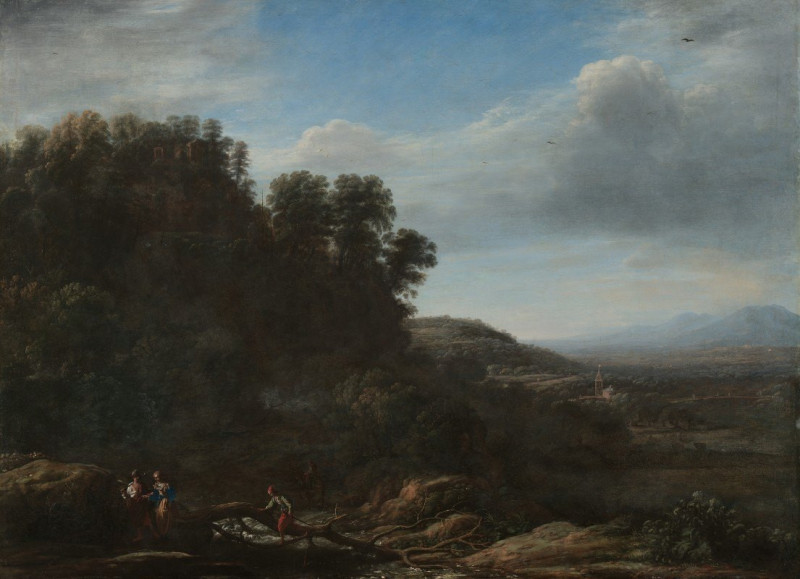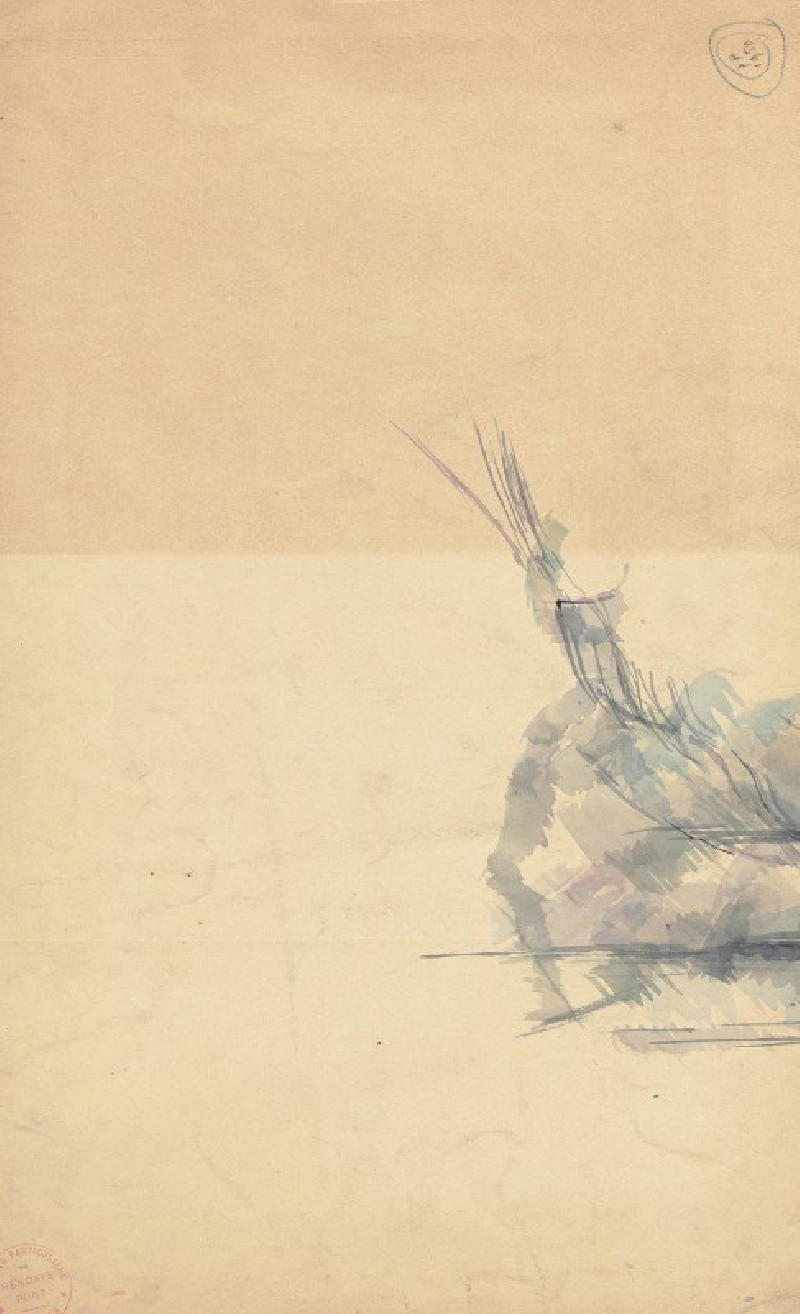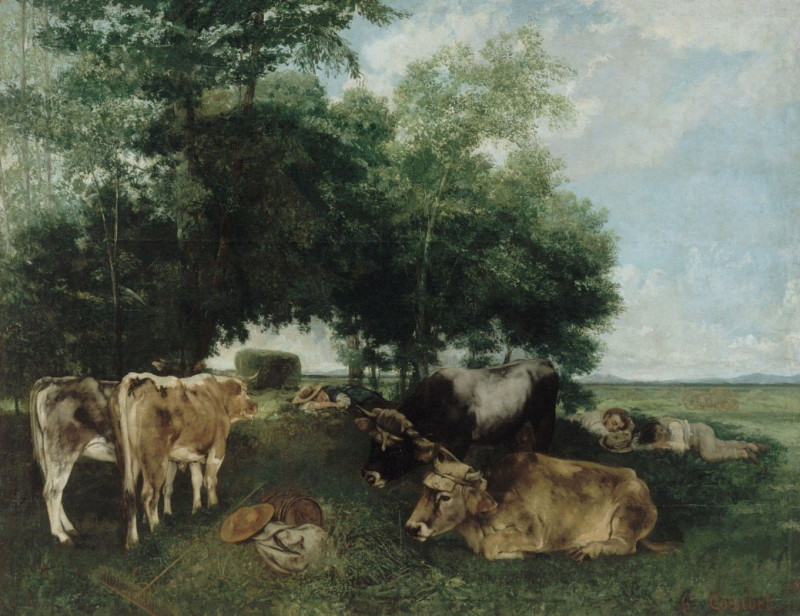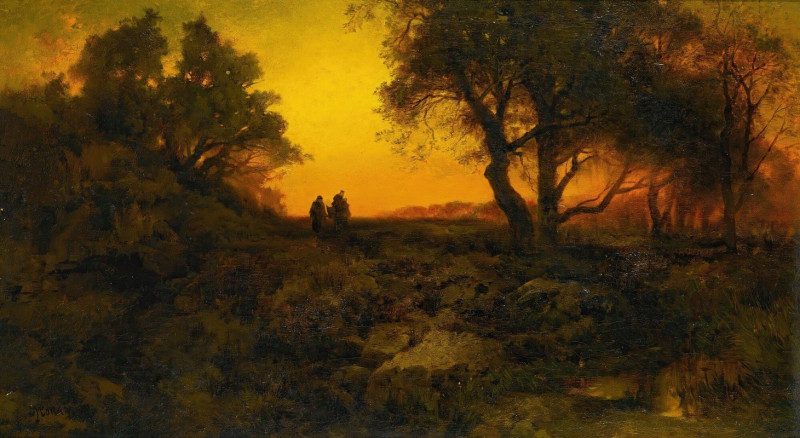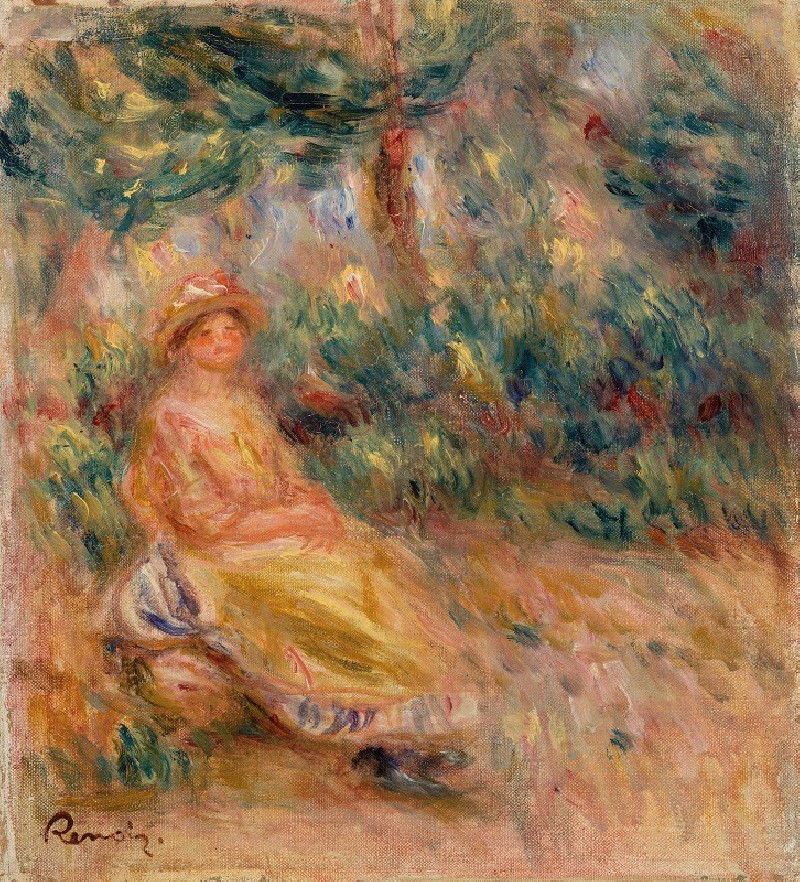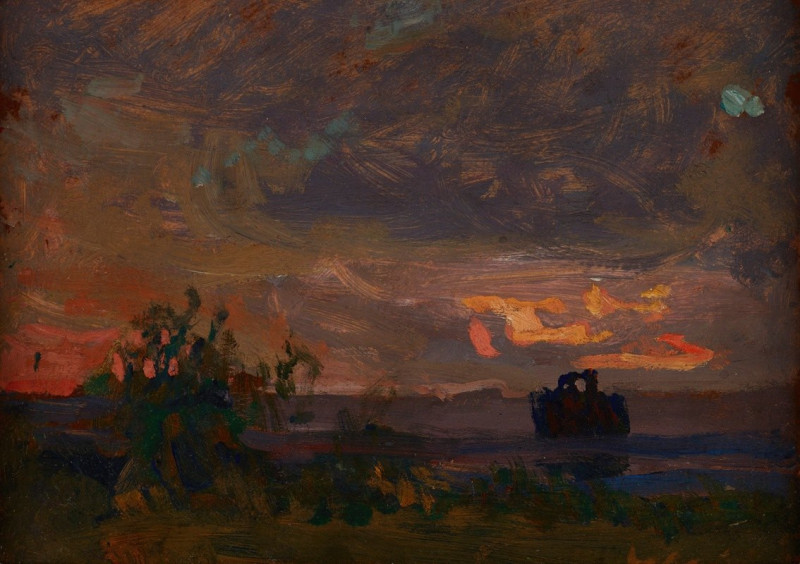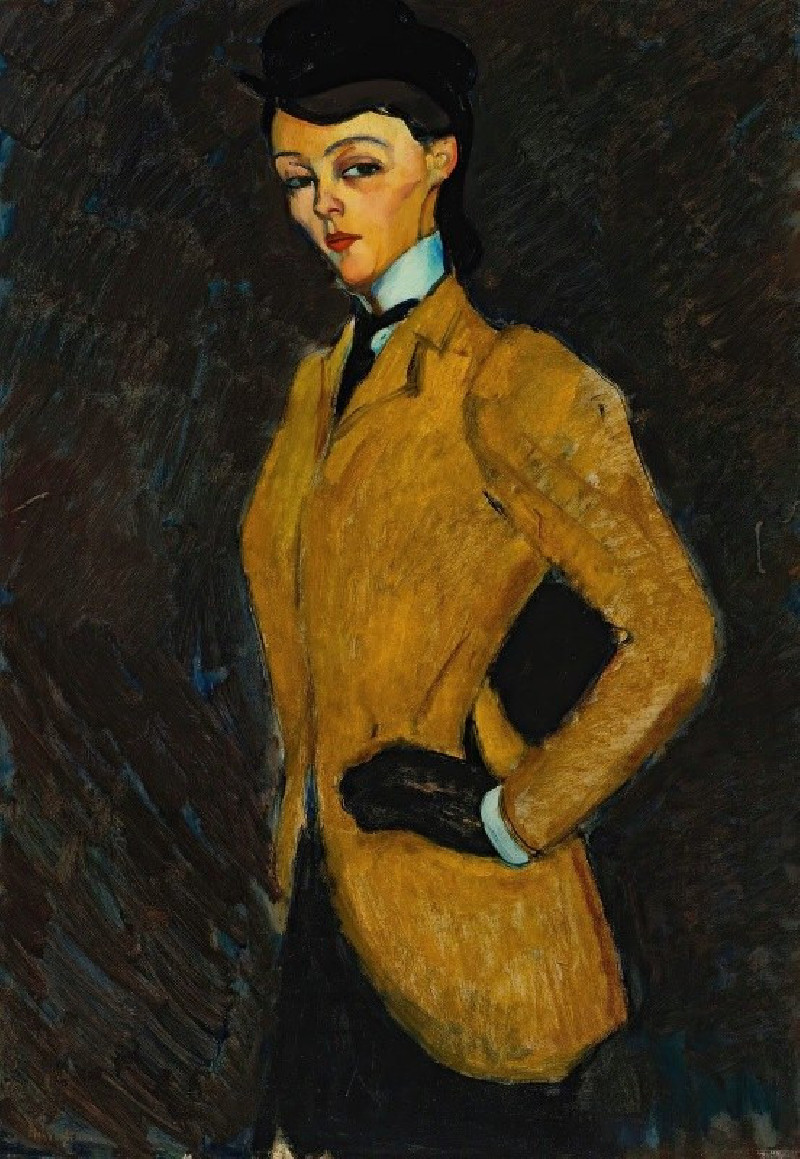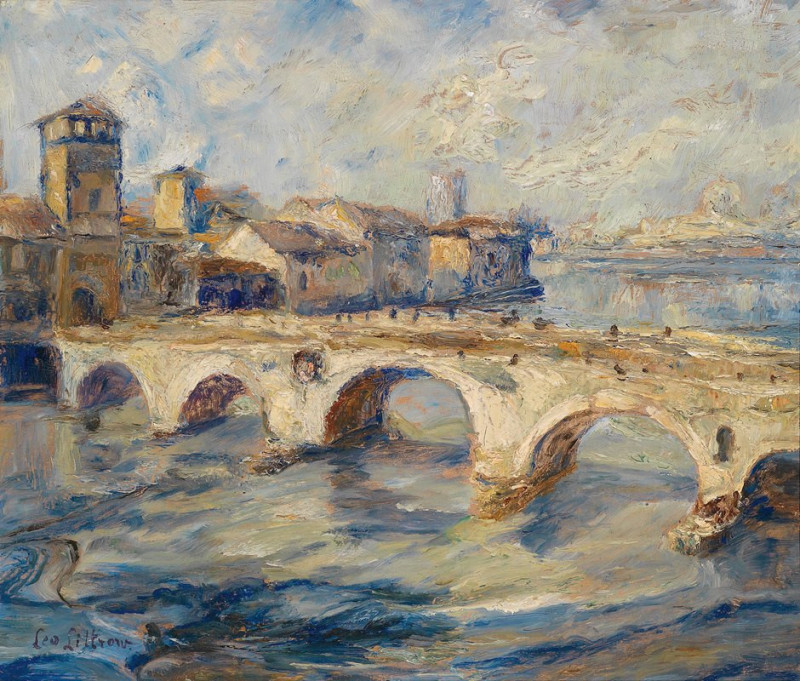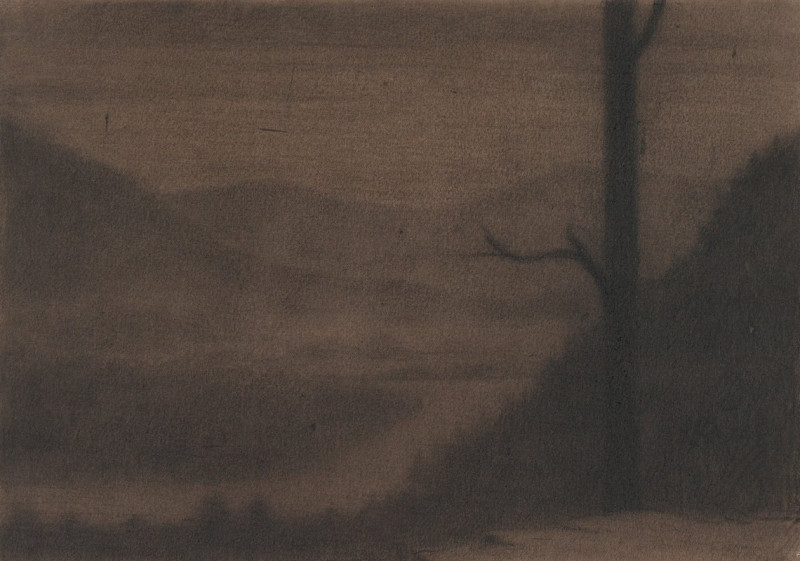Meeting on the Beach (1933–35)
Technique: Giclée quality print
Recommended by our customers
More about this artwork
"Meeting on the Beach" by Edvard Munch is an evocative painting that features a dramatic and colorful scene on a beach. The painting is split into two main sections featuring groups of figures against a vibrant backdrop.On the left side of the painting, three women dressed in bright, flowing gowns of green, white, and red are posed facing the sea. The women appear to be either greeting each other or watching something out at sea, as their gestures and postures suggest motion and engagement. Their figures are rendered in bold strokes and vibrant colors, making them stand out against the lighter background.To the right, two male figures are depicted from behind, looking out towards the sea. The men are dressed in dark, more subdued colors, contrasting sharply with the vivid dresses of the women. Their presence adds a sense of mystery and perhaps contemplation, as they gaze outward.The background of the painting is dominated by a dramatic, almost surreal sky and sea, rendered in shades of blue and pink that reflect the emotional intensity of the scene. Munch’s use of color and brushwork creates a scene that feels both immediate and dreamlike, evoking a sense of timeless encounter on the shoreline.Overall, "Meeting on the Beach" captures a moment of human interaction — possibly a meeting or parting — in a setting that blurs the boundary between reality and emotion, characteristic of Munch's expressionist style.
Delivery
Returns
Edvard Munch (12 December 1863 – 23 January 1944) was a Norwegian painter. His best known work, The Scream (1893), has become one of Western art's most iconic images.
His childhood was overshadowed by illness, bereavement and the dread of inheriting a mental condition that ran in the family. Studying at the Royal School of Art and Design in Kristiania (today's Oslo), Munch began to live a bohemian life under the influence of the nihilist Hans Jæger, who urged him to paint his own emotional and psychological state ('soul painting'); from this emerged his distinctive style.

